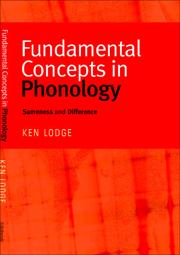Book contents
4 - Segmentation
Published online by Cambridge University Press: 05 August 2013
Summary
The phoneme is not a psychological reality. Rather, it is a cultural construct.
(Silverman, A critical introduction to phonology)Introduction: the origins of the phonological segment
I now want to turn to the matter of segmentation. This is not a matter of sameness and difference in the way that issues I have discussed so far have been, but it is an important background to phonetic description and phonological interpretation. There has been a long history of warnings against the seduction of the segment – for example, Paul [1890] (1970), Kruszewski [1883] (1995) and Baudouin de Courtenay [1927] (1972) – as pointed out succinctly by Silverman (2006). Later the concept was criticized by Firthian prosodists (see Palmer, 1970) and more recently reviewed by Bird & Klein (1990); the most recent exposé of the misguided acceptance of segmentation can be found in Silverman (2006). And yet it has for the most part been taken for granted in the tradition of Western linguistics. Even in the approaches that assume a geometry of the kind presented by Clements & Hume (1995) with autosegments that are claimed to capture syntagmatic relations in the speech chain, the notion of segments as cross-parametric slices is preserved (see also Goldsmith, 1990: 274-98). The notion of segmentation and its tenacity in phonological theories is importantly related to our system of writing with the Roman or other segmental alphabets (see Morais et al., 1979, Bertelson et al., 1985, Mann, 1986, Morais et al., 1986, Read et al., 1986 and Morais, 1991 on segmentation and literacy), and a survey of the findings of research into the relationship between segmentation skills and reading/writing is a suitable starting point for this chapter.
- Type
- Chapter
- Information
- Fundamental Concepts in PhonologySameness and Difference, pp. 42 - 64Publisher: Edinburgh University PressPrint publication year: 2009



